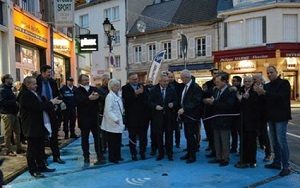
Since 2014, the French city of Saint-Amand has launched several innovations in terms of traffic flow, parking management and the organisation of municipal services, and the smart parking zones have been equipped with Nedap’s Sensit sensors to monitor the real-time status of each individual parking space as part of this innovational smart city project.
Motorists are allowed to park their vehicles for half an hour for free.
After thirty minutes, an alert is transmitted to the municipal police creating an efficient enforcement tool. Since the commissioning of Sensit sensors in March of 2016, this smart parking solution has helped to greatly decrease the number of parking violations in the city.
Customers who need to run a quick errand or suppliers delivering packages can use the short-stay parking spots in front of the shops for 30 minutes free of charge. With the introduction of the retail parking concept, the city responds to the demand of many retailers and visitors for sufficient available parking spaces in front of the stores.
Nedap’s Sensit sensors are installed at individual parking spaces to monitor the occupancy of the on-street parking bays. Sensit consists of smart parking sensors that detect in real-time whether or not the individual parking bays are occupied and how long they have been occupied. This information is of great value to the municipal police, as it helps them to enforce efficiently with less parking violations as a result.
Besides Nedap’s smart parking platform, other smart city technologies have been installed in Saint-Amand. The aim is to monitor the consumption of gas, electricity and also detect water leaks. An innovation that, according to Mayor Thierry Vinçon, allowed the saving of €40.000 on the gas bill between 2014 and 2015.
The city has also set up a mobile application that allows residents to measure noise and alert municipal services if they exceed thresholds. About 300 people currently use this application. Finally, the city has enabled twenty green keepers to use smartphones to receive orders and to manage the city’s green areas.











